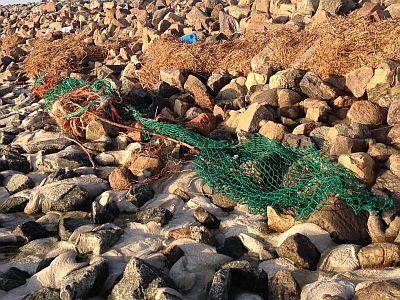![[Translate to English:] Microplastikpartikel](/fileadmin/_processed_/f/9/csm_Microplastik_ee975b1224.jpg)
| Project data | |
|---|---|
| Project leader: | Prof. Prof. h. c. Dr. Ursula Siebert |
| Scientific work: | Dr. Bianca Unger, M.Sc. Carolin Philipp |
| Project term: | January 2018 until December 2020 |
| Coordination: | AquaEcology, Marie-Curie-Straße 1, 26129 Oldenburg |
| External funding: | Umweltbundesamt (UBA) über AquaEcology GmbH & Co. KG |
| Further information: | http://www.aquaecology.de |
Project description
For implementing the Marine Strategy Framework Directive (MSFD) information on the current status and the establishment of feasable monitoring schemes are urgently needed. To achieve a good environmental status, the MSFD claims that marine debris should not cause any harm to the marine environment (Descriptor 10). This also includes small particles, such as microplastics (MPs). A trophic transfer MPs was already proven between mussels (Mytilus edulis) and crabs (Carcinus maenas). However, information on the occurence of microplastics in top predator species of German waters are lacking. Due to their position within the foodchain all three species [harbour porpoise (Phocoena phocoena), harbour seals (Phoca vitulina) and grey seals (Halichoerus grypus)] are most likely accumulating uptaken particles. Carcasses stranded along the coastline of Schleswig-Holstein are transported to the Institute for Terrestrial and Aquatic Wildlife Research (ITAW) of the University of Veterinary Medicine, Hannover.

Necropsies are then conducted, if the state of decay allows for further inspections. Furthermore, the health status and cause of death are noted if possible. In the course of this project, faeces samples of top predator species are analysed for the presents of micro plastic particles, which are then judged quantitatively and qualitatively. Since 2014 faeces samples are collected for further analysis during these necropsies. Within the scope of this project 15 faeces samples are analysed for the presents of micro plastic particles (5 samples of each species). Therefore, samples of the hindgut, including faeces, are cleaned up and filtered. The filter is then stained with nile-red and then checked for microplastic particles under the fluorescence microscope. After that, isolated particles from the filter are then qualitatively analysed with the help of RAMAN-Spectroscopy.
This analysis is part of the doctoral thesis conducted by Carolin Philipp (Link).


